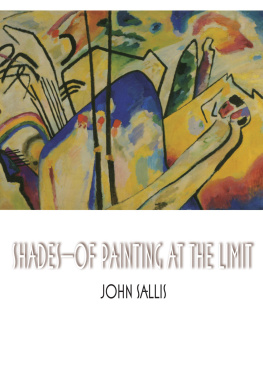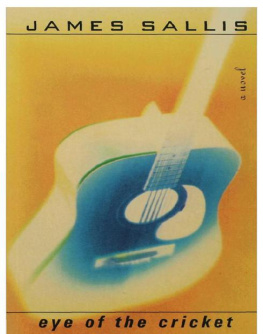SHEHERAZADE THROUGH THE LOOKING GLASS
THE METAMORPHOSIS OF THE THOUSAND AND ONE NIGHTS
ROUTLEDGE STUDIES IN ARABIC AND MIDDLE-EASTERN LITERATURES
Editors:
J. E. Montgomery
University of Cambridge
R. Allen
University of Pennsylvania
Curzon Studies in Arabic and Middle-Eastern Literatures is a monograph series devoted to aspects of the literatures of the Near and Middle East and North Africa both modern and pre-modern. It is hoped that the provision of such a forum will lead to a greater emphasis on the comparative study of the literatures of this area, although studies devoted to one literary or linguistic region are warmly encouraged. It is the editors objective to foster the comparative and multi-disciplinary investigation of the written and oral literary products of this area.
SHEHERAZADE THROUGH THE LOOKING GLASS
THE METAMORPHOSIS OF THE THOUSAND AND ONE NIGHTS
Eva Sallis
First Published in 1999
by Routledge
2 Park Square, Milton Park, Abingdon, Oxon, OX14 4RN
270 Madison Ave, New York NY 10016
Transferred to Digital Printing 2010
1999 E. K. Sallis
All rights reserved. No part of this book may be reprinted or reproduced or utilised in any form or by any electronic, mechanical, or other means, now known or hereafter invented, including photocopying and recording, or in any information storage or retrieval system, without permission in writing from the publishers.
British Library Cataloguing in Publication Data
A catalogue record of this book is available from the British Library
ISBN10: 070071099X (hbk)
ISBN10: 0415595533 (pbk)
ISBN13: 9780700710997 (hbk)
ISBN13: 9780415595537 (pbk)
Publishers Note
The publisher has gone to great lengths to ensure the quality of this reprint but points out that some imperfections in the original may be apparent.
Contents
List of Abbreviations
EI (2) | The Encyclopaedia of Islam (second edition) |
JA | Journal Asiatique |
JAL | Journal of Arabic Literature |
JNES | Journal of Near Eastern Studies |
JAOS | Journal of the American Oriental Society |
JRAS | Journal of the Royal Asiatic Society |
JSS | Journal of Semitic Studies |
IJMES | International Journal of Middle Eastern Studies |
ZDMG | Zeitschrift der Deutschen Morgenlandischen Gesellschaft |
ZER | Zotenbergs Egyptian Recension |
This project could not have been completed without the generous assistance of the British Council who funded a research attachment with the Department of Middle Eastern Studies, University of Manchester.
A substantial part of appears in the Journal of Arabic and Middle Eastern Literatures (1.2), entitled Sheherazade/Shahrazd: Rereading the Frame Tale of the 1001 Nights.
A substantial part of was presented as a paper entitled English Translation of the Alf layla wa-layla at the Thirteenth International Conference of Language, Literature, Linguistics and Translation held at the Yarmouk University in Irbid, Jordan, April 1996.
The University of Adelaide and the Australian Federation of University Women generously supported and provided funding for various components of this project.
I wish to thank Philip Waldron and Michael Tolley of the University of Adelaide, and Professor G. Rex Smith who supervised my studies in the University of Manchester; also Professor Andras Hamori and Professor Ferial Ghazoul for their comments and constructive criticism. I also wish to thank Amal Abou-Hamdan, Samer Akkach, Rosemary Greentree, James E. Montgomery, Minerva Nasser-Eddine, Maria Nichterlein, Abdallah Osman, Amaia de la Quintana, Jack Ross, Roger Sallis, Teresita White and the teachers at the Yemen Language Center.
Special thanks also to Alan Keig, the staff of interlibrary loans in the Barr Smith and the staff of the John Rylands.
Spanish sources were translated for me by Amaia de la Quintana
Finally, I am very grateful to Dr James Montgomery for his rigorous reading and many helpful comments in the editing stages of the manuscript.
The symbols used for the transliteration of Arabic in this thesis are those of the Encyclopaedia of Islam (second edition), Volume VIII, with the exception that dj has been modernised to j, to q. The system used aims at clarity: case endings except for an indefinite accusative indicated in the Arabic text have been left off. Verbs, however, are transliterated in full.
In general, words which have a familiar form in English (such as Caliph) retain that form. However, as exceptions, Qurn is transliterated, and genie is changed to jinn, jinniyya, or jinn in order to distinguish the masculine, feminine and plural forms.
Sheherazade is spelled in the European way as a reflection of the composite nature of the Nights present day identity.
I am very grateful to Dr James E. Montgomery for providing me with Arabic transliteration fonts, and to Dr Samer Akkach and Amal Abou-Hamdan for kindly reading through my transliterations and translations. I am, however, solely responsible for any errors.
Introduction to the Nights
The Thousand and One Nights was secular literature, historically not approved by the cultured literary class as literature at all. It existed as a popular entertainment and much of it expresses the desires, wishes and experiences of a middle to lower class urban and mercantile people.1 It evolved, arguably as a response or reaction to a rigid social and spiritual structure, and satisfies a need similar to that which generates carnival and carnivalesque inversions in popular cultures.2 However, all of this is what it was, once. What it is now is infinitely more complex because it was reborn into an alien environment in 1704/11163, an environment in which its signs were received in a radically different way from their accepted meanings in their culture of birth. Not only were most referents unknown but the signs themselves took on a reference unique to them, a reference to a general system of imaginative perception in which one of the essential components was mystery and a sense of being cut loose from meaning.
When we develop a new approach and apply it to a work of literature, we thereby modify the past, and we change the work itself.4 The work exists and persists as an identity by some kind of agreement between word and reader, between sign and interpretation. This is a very fluid concept of identity and, with this in mind, it is clear that works of literature change as people and cultures who read them change. This study will explore the Nights with reference to this view of literature, for the Nights has a history distinguished by transformation.
This study approaches the text with affirmation of its fundamental heterogeneity, for the text comes to us through a multitude of manuscripts, printed editions in Arabic and very diverse translations. Understanding the issues which surround translation is essential. Extraordinary translations such as the early English translations of the









